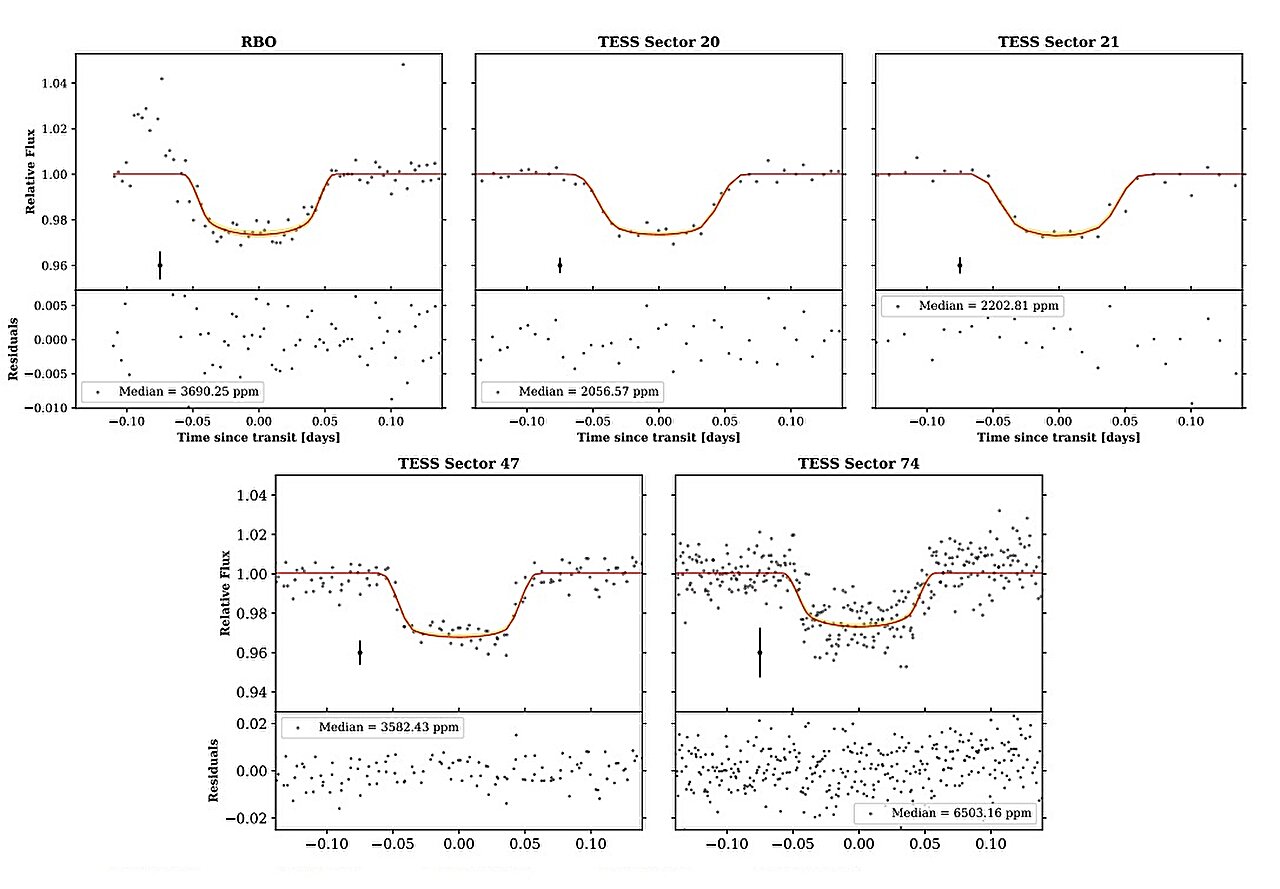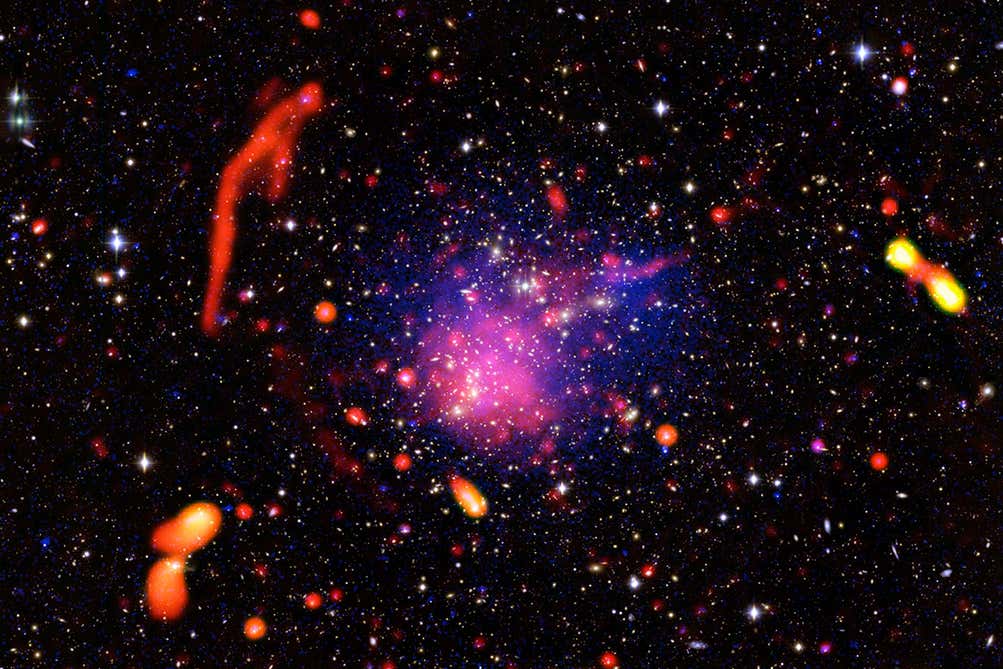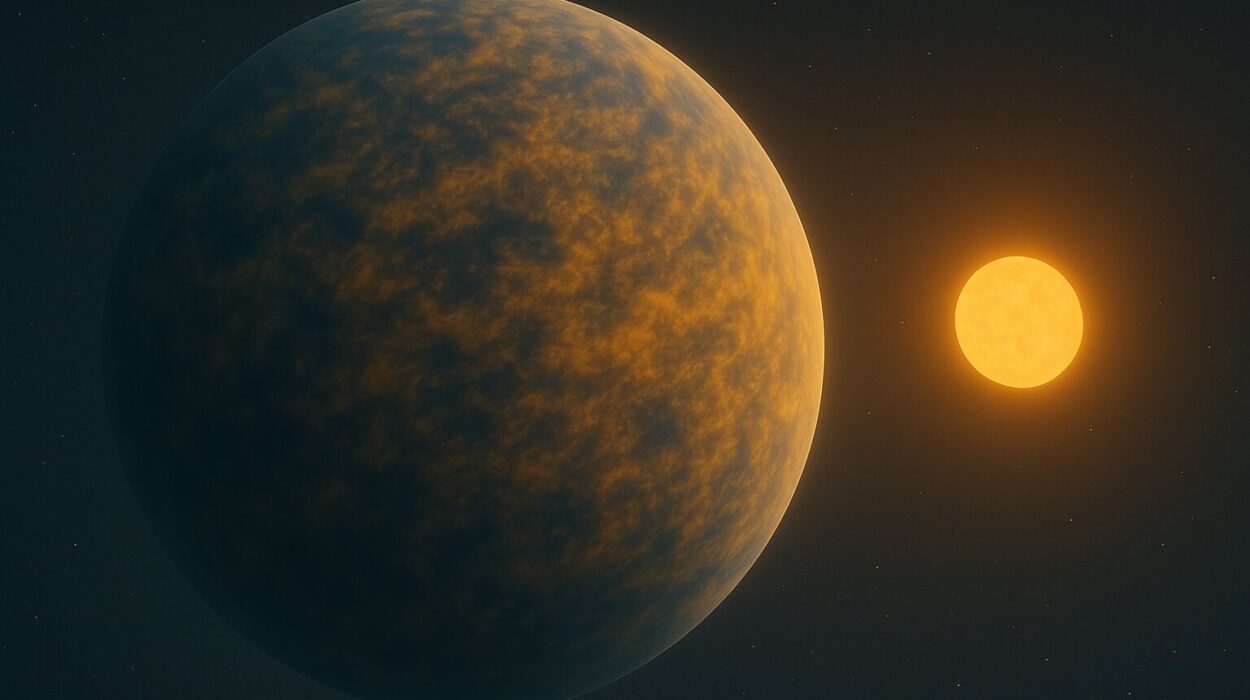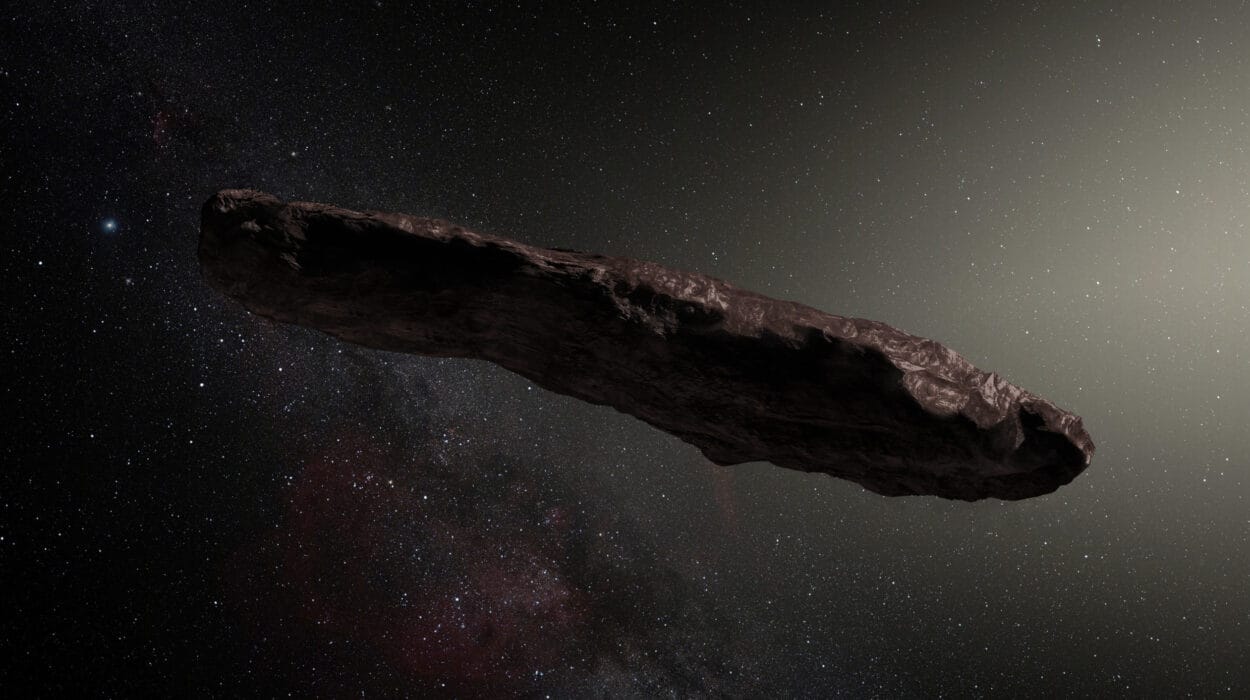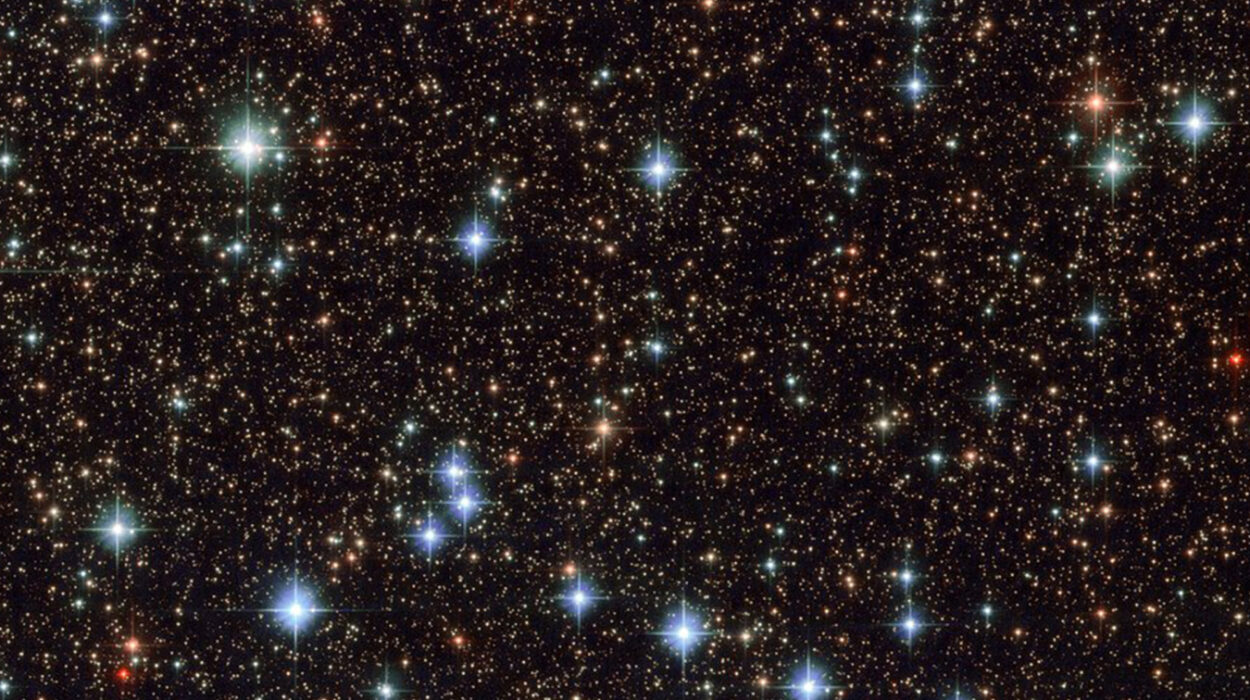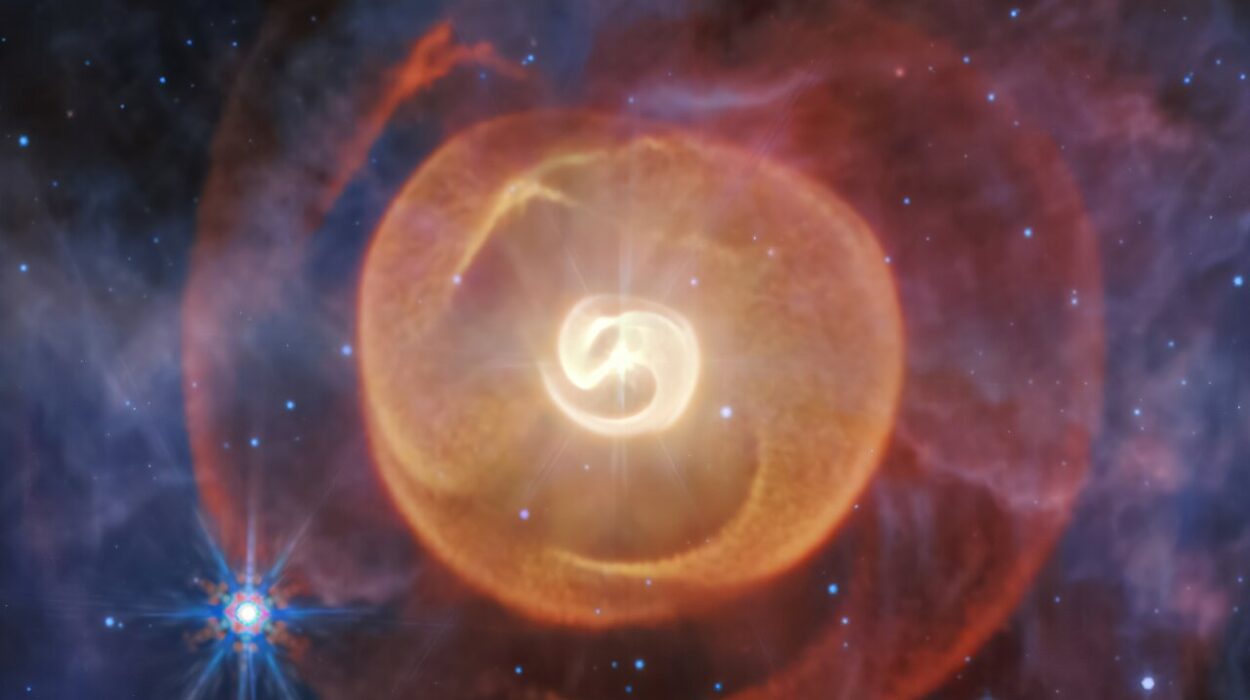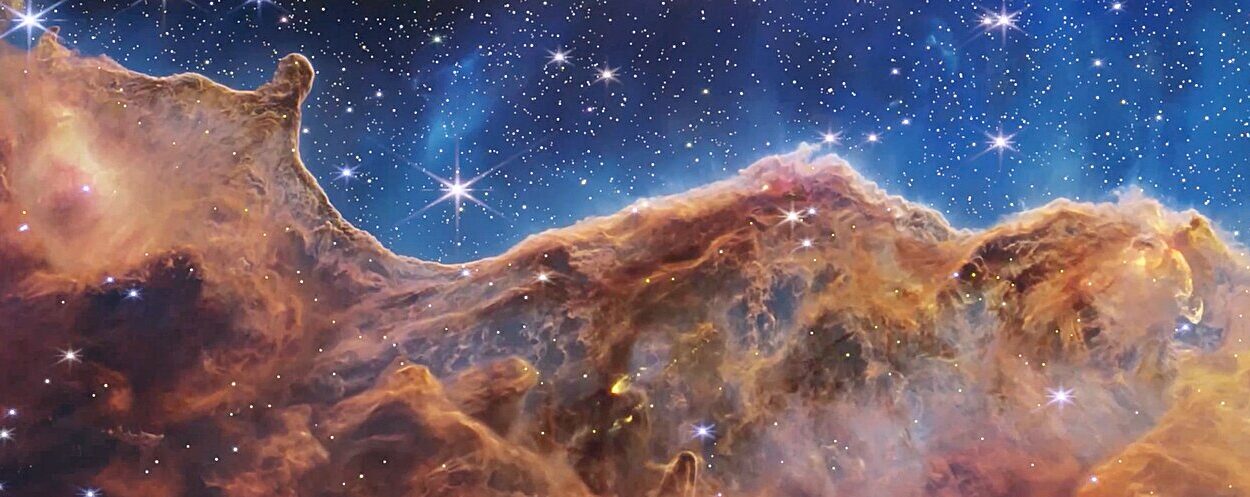In the grand cosmic game of planetary discovery, most eyes are on the stars—bright, massive, and full of drama. But some of the universe’s most intriguing secrets are quietly hiding in the faint glow of red dwarfs, the smallest and most numerous stars in the galaxy. Now, an international team of astronomers has uncovered one of these secrets: TOI-5573 b, a rare and massive exoplanet orbiting a cool M-dwarf star more than 600 light-years away. The discovery not only challenges our theories of how planets form but also adds a new jewel to the growing family of mysterious GEMS—Giant Exoplanets around M-dwarfs.
A Rare Kind of Planet Around an Unlikely Host
TOI-5573 b isn’t your everyday exoplanet. It’s part of a class so rare, scientists gave them a sparkling acronym—GEMS. These are giant planets, comparable in size to Jupiter or Saturn, but orbiting M-dwarfs—the small, cool, and long-lived stars that make up about 70% of the stars in the Milky Way. What makes GEMS so intriguing isn’t just their size, but the fact that they exist at all.
Planet formation models suggest that M-dwarfs don’t have enough raw material in their disks to build giants. Their protoplanetary disks—the swirling clouds of gas and dust from which planets form—are typically less massive than those of larger stars like the Sun. That scarcity of building blocks means it should be rare for these systems to produce gas giants. And yet, TOI-5573 b exists—defying the odds and deepening the mystery.
The Discovery: From Flickering Starlight to Planetary Confirmation
The journey to discovering TOI-5573 b began with data from NASA’s Transiting Exoplanet Survey Satellite (TESS). This space-based telescope watches hundreds of thousands of stars, waiting for tiny dips in brightness caused by planets passing in front of their stars—transits.
TESS first spotted suspicious flickers from the star TOI-5573—also known as TIC 459762279—during four different observing campaigns (Sectors 20, 21, 47, and 74). These transits were periodic and consistent, suggesting a planetary candidate. But a shadow in the light isn’t enough to confirm a planet. It could be stellar noise, a binary companion, or any number of false positives.
So the planet-hunting team, led by Rachel B. Fernandes of Pennsylvania State University, launched a global follow-up campaign. They captured additional transits with the Red Buttes Observatory in Wyoming, and crucially, secured radial velocity measurements using two of the most advanced spectrographs on Earth: HPF (Habitable-zone Planet Finder) and NEID, both mounted on large telescopes.
These instruments measure the tiny wobble in a star’s motion caused by the gravitational tug of an orbiting planet. The combined data nailed it: the transits were real, and the object causing them was indeed a planet—a giant one. TOI-5573 b had been confirmed, with a mass about 0.35 times that of Jupiter and a radius around 0.87 Jupiter radii.
A Cold Giant in a Warm Orbit
Although it’s smaller than Jupiter, TOI-5573 b is comparable in size and density to Saturn, with a mean density of about 0.66 g/cm³. It completes an orbit around its host star every 8.79 days, traveling at a distance of just 0.07 astronomical units (AU)—a blisteringly close orbit compared to Earth’s 1 AU from the Sun.
Yet despite its tight orbit, TOI-5573 b is surprisingly cool. Its equilibrium temperature is just 528 K (255°C or 491°F), which is far lower than typical hot Jupiters that often bake at over 1,000 K. This makes TOI-5573 b one of the coolest GEMS ever found, a status that could prove valuable for astronomers aiming to study planetary atmospheres.
Why does this matter? Because cooler temperatures often mean clearer atmospheres, less influenced by extreme heating and more amenable to analysis with upcoming instruments like the James Webb Space Telescope (JWST). TOI-5573 b could soon become a prime candidate for the detailed study of exoplanet chemistry.
The Metal-Rich Clue: Why This Planet May Exist at All
Perhaps the most tantalizing aspect of this discovery is what it might teach us about planet formation. The host star TOI-5573 is not just a typical M-dwarf—it’s unusually rich in heavy elements, or as astronomers say, it has super-solar metallicity.
Metals in astronomy include all elements heavier than helium, and they’re essential for planet formation. In the dense early disks of young stars, metals form dust grains that clump into pebbles, rocks, and eventually planetesimals—the building blocks of planets. For a gas giant to form, you need a massive solid core, about 10 Earth masses or more, to rapidly accrete hydrogen and helium from the surrounding disk before it dissipates.
In M-dwarfs, this process is usually cut short because their disks are smaller and less metal-rich. But TOI-5573 bucks the trend. The star’s elevated metallicity could have boosted the dust-to-gas ratio, increasing the disk’s opacity and enabling a more efficient accumulation of solids. That, in turn, could have allowed TOI-5573 b to build a large core quickly enough to become a gas giant.
This finding supports a growing hypothesis: giant planets preferentially form around metal-rich M-dwarfs, a subtle but potentially game-changing insight into planetary demographics.
A Planetary Puzzle: More Questions Than Answers
Despite the significance of TOI-5573 b, it’s just one piece of a much larger puzzle. Only a handful of GEMS have been discovered so far, and they appear to be highly diverse in mass, orbit, and composition. That diversity suggests a complex interplay of formation conditions, migration histories, and host star characteristics.
The discovery team emphasized the need for more high-resolution spectroscopic studies of M-dwarfs and their planets. Better understanding the metallicities, disk conditions, and environmental factors that allow giants to form around small stars could unlock a new frontier in exoplanet science.
Moreover, the relatively cool temperature of TOI-5573 b presents an unusual atmospheric laboratory. Most exoplanets with detailed atmospheric observations to date have been hot Jupiters. TOI-5573 b might offer a rare glimpse into the chemistry and climate of a cooler gas giant, potentially revealing different cloud structures, molecules, and thermal behaviors.
From Data to Destiny: What’s Next for TOI-5573 b
Now that TOI-5573 b is confirmed, the race is on to explore it further. Observatories around the world are likely to aim their instruments at this distant world, attempting to catch its spectral fingerprints as it passes in front of or behind its star. These observations could identify molecular features such as water vapor, methane, carbon dioxide, or exotic hazes.
The JWST could be especially valuable here. Its unparalleled infrared sensitivity makes it ideally suited to analyze cooler planets, possibly even detecting biosignature-like gases, although TOI-5573 b is far too hot and gaseous to be habitable itself.
Still, every piece of data contributes to a better understanding of how diverse planetary systems can be. TOI-5573 b isn’t just another entry in a catalog—it’s a bold reminder that the universe is more imaginative than we are.
A New Era for M-dwarf Exploration
For decades, M-dwarfs were neglected in exoplanet searches. They were too faint, too red, too challenging. But now, with modern instruments and sensitive photometric surveys, they’ve become the hotspot of planetary discovery. Many of the most exciting potentially habitable planets, including those in the TRAPPIST-1 system, orbit M-dwarfs.
The discovery of a giant like TOI-5573 b in such an environment turns that exploration on its head. Not only do small stars host Earth-like worlds—they might also cradle Saturn-sized giants, previously thought improbable in such lean systems.
We’re entering a new era where giant planets around small stars are no longer anomalies—they’re data points. With every discovery like TOI-5573 b, the line between possible and impossible gets redrawn.
Conclusion: The Quiet Revolution of the GEMS
TOI-5573 b is more than a cold Saturn circling a quiet red star. It’s a symbol of the quiet revolution underway in exoplanet science. From the faintest stars, we’re uncovering the loudest messages about how planets form, evolve, and defy our expectations.
This single world—605 light-years away—speaks volumes. It tells us that planetary formation is richer and more varied than once imagined. It whispers that the building blocks of gas giants can assemble even in the unlikeliest nurseries. And it invites us to listen more closely to the cosmic stories that M-dwarfs are just beginning to tell.
In the shimmering cosmos, TOI-5573 b is a genuine gem—both scientifically and metaphorically. And like all precious things, it reminds us just how much we’ve yet to discover.
Reference: Rachel B Fernandes et al, Searching for GEMS: Confirmation of TOI-5573b, a Cool, Saturn-like Planet Orbiting An M-dwarf, arXiv (2025). DOI: 10.48550/arxiv.2505.08947
